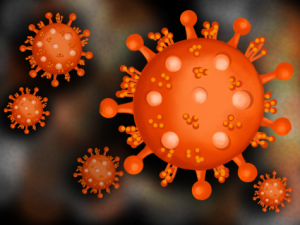Pfizer and Moderna vaccine sheds light during pandemic
Precaution necessary for decisions
November 19, 2020
With the recent announcements of COVID-19 vaccines made by companies Pfizer and Moderna, being up to 95% effective, comes both excitement and unanswered questions.
Both companies’ vaccines have concluded their phase 3 testing, with positive results being seen through initial analysis.
Despite the hope of a combatant for COVID-19 that comes with this data, I believe these results shouldn’t fully be trusted yet and should be carefully examined.
After the vaccine was administered for the phase 3 trial, side effects like slight fevers and muscle aches have been a trend in volunteers for the trial. Elderly and people suffering from current illnesses might have enhanced symptoms after receiving the vaccine.
Pfizer and Moderna both use new technology that hasn’t been approved on humans until just recently. Both use mRNA, which programs a person’s cells to make copies of the virus. The copies alert the immune system when exposed to COVID-19 cells, which neutralizes the threat. The fact that this method hasn’t been authorized for humans for quite long is frightening, as there might not be much information on the side effects.
The vaccine will require two doses for it to be effective, each within a span of a week. Since the vaccine requires multiple doses, the amount of resources might not be easily and readily available across the U.S. This obstacle will make it harder to get treatment for COVID-19.
The Pfizer vaccine requires extensive care. The vaccine must be stored at temperatures between -112 to -79 degrees Fahrenheit, which need medical-grade coolers to be properly stored. The vaccine then can be left in temperatures ranging from 35 to 46 degrees for up to five days, which then must be discarded.
This short life span might be a problem down the road, as a large number of stored vaccines will be essential for administration sites. Making sure the supply is steadily being shipped in and being used before its expiration date is crucial and will be a challenge that cannot be ignored.
Even with all the specific instructions on handling the vaccine, there is still a lot of hope and promise as a result of the vaccine. Pfizer and Moderna have estimated that 45 million doses may be available by January if all continues to go well.
Personally, I was excited to hear this news. My hope is that the vaccines are able to assist in the current situation that we are in. In order to succeed, I believe the U.S. needs to take a cautious approach. The vaccines may be the answer to COVID-19, but it is easier said than done.






Joshua H. • Nov 20, 2020 at 10:26 am
Nice story! It’s great that students like yourself are making sure that their opinion and voice is being heard during these hard times.